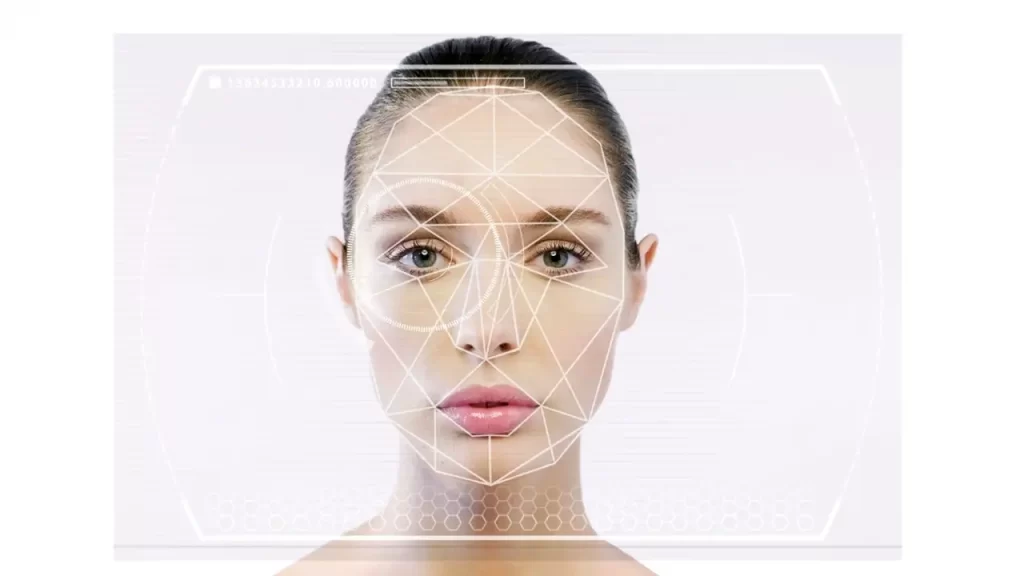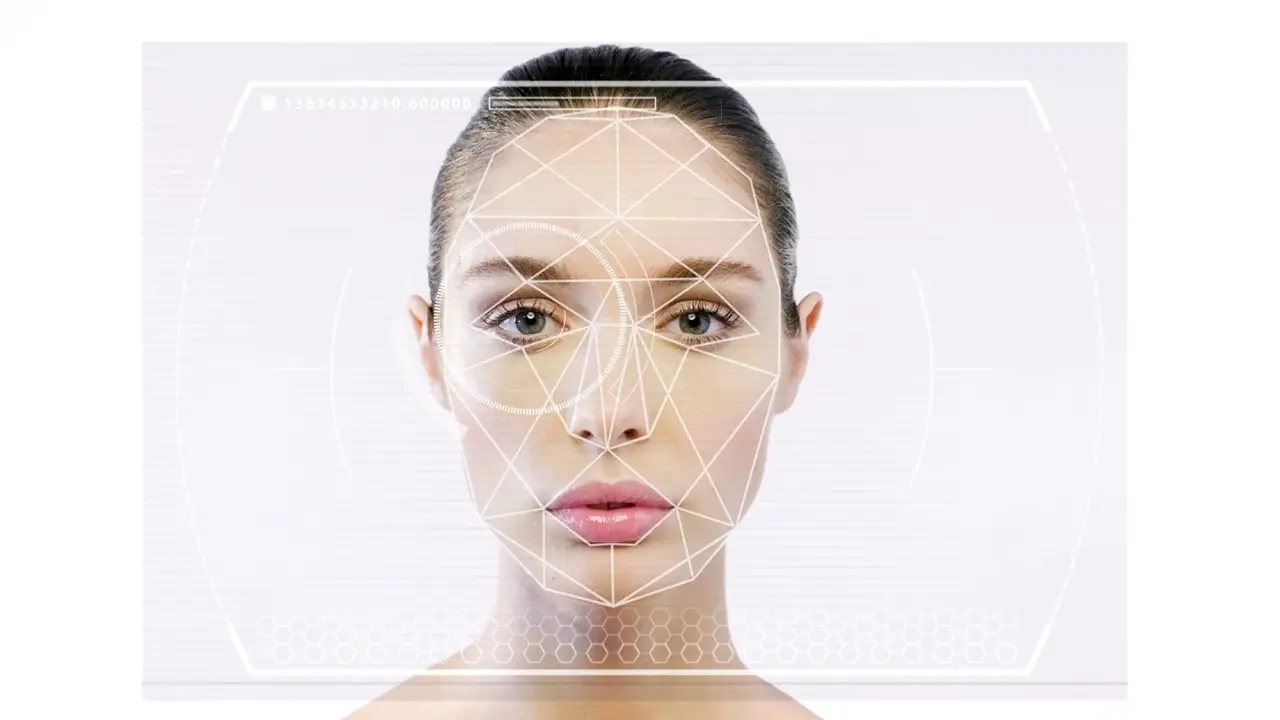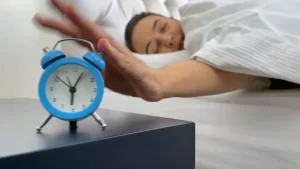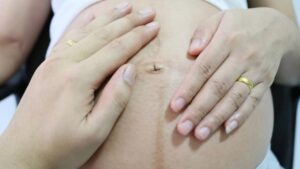
You might be getting pimples on your face, but you might not understand the reason for it. If you want to get rid of recurring pimples, then face mapping can help you in this.
What do we not do to get rid of pimples or acne on the face. We try all kinds of remedies like cream, therapy, medicine, but still pimples spoil the beauty of the face. Actually, we do not know the real reason for acne, nor do we ever try to understand it, due to which its correct solution is not found.
Actually, we work on the upper part of the skin, but its reason is internal, which is related to our health. It is not only due to skin related problems, but whichever part of our body has a problem and whichever part of the skin is connected to it, pimples or acne appear there. This kind of in-depth analysis of the skin is called face mapping.
Scientifically, ‘Face Mapping’ helps to know your health status and analyze the skin problems.
What is face mapping?
Facial mapping, also known as face mapping, is a method to identify the pattern of acne lesions on the face, which helps to determine its underlying causes and select appropriate treatments. Face mapping is an ancient technique, which is a three thousand year old skin analysis method. Its use is considered effective in removing the problem of acne on the face. Although it has not been fully certified till now, but in today’s time beauty and skin experts have started using it. Scientifically, face mapping helps to tell the condition of your health and analyze why acne is occurring in which part of the skin. Face mapping can also be used to treat problems like redness, rashes due to food allergies, lines, swelling and wrinkles. In face mapping, the face is divided into at least 10 different areas.
Face mapping, also known as facial mapping, is an ancient technique used to identify the underlying causes of acne and other skin issues by analyzing the pattern of lesions on the face. This method, which dates back over three thousand years, is rooted in traditional Chinese medicine and Ayurveda. Here’s a detailed explanation:
Face Mapping: An Ancient Skin Analysis Technique
1. Identifying Acne Patterns: Face mapping involves examining the specific areas of the face where acne lesions appear. By identifying these patterns, practitioners can determine the potential underlying causes of acne, such as hormonal imbalances, digestive issues, or stress. This targeted approach helps in selecting appropriate treatments for each individual.
2. Historical Background: Face mapping is an ancient practice that has been used for thousands of years. It is based on the belief that different areas of the face are connected to specific organs and systems within the body. By analyzing the skin, practitioners can gain insights into a person’s overall health and well-being.
3. Modern Usage: Although face mapping has not been fully certified by modern science, it has gained popularity among beauty and skin experts in recent years. Many practitioners use it as a complementary tool to traditional dermatological treatments. It is considered effective in addressing acne and other skin problems by providing a holistic view of a person’s health.
4. Health Analysis: Scientifically, face mapping helps to analyze why acne occurs in specific parts of the skin. For example, acne on the forehead might be linked to digestive issues, while acne on the cheeks could be related to respiratory problems. This method allows for a more personalized approach to skincare and treatment.
5. Treating Various Skin Issues: Face mapping is not limited to acne. It can also be used to address other skin problems such as redness, rashes due to food allergies, lines, swelling, and wrinkles. By understanding the root causes of these issues, practitioners can recommend treatments that target the underlying problems.
6. Division of the Face: In face mapping, the face is divided into at least 10 different areas, each corresponding to a specific organ or system in the body. Here are some common associations:
- Forehead: Linked to the digestive system and bladder.
- Between the Eyebrows: Connected to the liver.
- Nose: Related to the heart and circulatory system.
- Cheeks: Associated with the respiratory system.
- Chin and Jawline: Linked to hormonal imbalances and reproductive organs.
By incorporating face mapping into skincare routines, individuals can gain a deeper understanding of their skin’s health and address issues more effectively. While it may not be a standalone solution, it offers valuable insights that can complement other treatments and promote overall well-being.
There is not just one reason!
Finding out the cause of your acne can be a difficult task. But face mapping can tell you to a great extent whether the body is healthy or not. If acne appears on the jaw line and hairline, it means that there is a hormonal imbalance in the body. On the other hand, if the problem of acne persists even after the age of 25, it means there is a problem in the liver. If there are pimples on the forehead, it means there is dandruff or dirt in the scalp or the stomach is not clean. Apart from this, PCOS is also responsible in many cases. Dysbiosis in the body can be a major reason for this, due to which the balance of bacteria starts deteriorating, that is, the bacteria in the GI tract become unbalanced. Due to this, the flora of the skin gets disturbed and acne appears. Face mapping is a helpful technique that can help women suffering from acne understand how and why they are getting acne.
The Real Reason for Acne
It is believed that pimples appear on the face when the face is not washed properly, due to which the skin pores get blocked. Apart from this, even if there is any kind of problem in the skin, then various types of problems are seen on the face. Many times pimples are indicating something about our health. Especially where they are coming out, it is a sign that there is definitely some problem in some part of the body. Dermatologists say that allergies, redness, acne, rashes or any kind of problem in the skin depends on many things, such as allergies, wrong diet, increased stress levels, hormonal imbalance, age and genetics. Dermatologists also say that through face mapping, the reasons for pimples in many parts of the skin can be found out.
Acne is a common skin condition that can be influenced by various factors. Here’s a detailed explanation of the real reasons behind acne:
The Real Reason for Acne
1. Blocked Pores: One of the primary reasons for acne is the blockage of skin pores. This can happen when the face is not washed properly, leading to the accumulation of dirt, oil, and dead skin cells. These blockages create an environment where bacteria can thrive, resulting in pimples.
2. Skin Problems: Various skin problems can manifest as acne. If there is any underlying issue with the skin, it can lead to the appearance of pimples and other skin problems. This includes conditions like eczema, dermatitis, and rosacea.
3. Health Indicators: Acne can sometimes indicate underlying health issues. The location of pimples on the face can provide clues about potential problems in different parts of the body. For example, acne on the forehead might be linked to digestive issues, while acne on the cheeks could be related to respiratory problems.
4. Contributing Factors: Dermatologists identify several factors that can contribute to acne, including:
- Allergies: Allergic reactions to certain foods, cosmetics, or environmental factors can cause skin inflammation and acne.
- Diet: A poor diet, especially one high in sugar and processed foods, can exacerbate acne.
- Stress Levels: Increased stress can lead to hormonal imbalances, which can trigger acne.
- Hormonal Imbalance: Hormonal changes, particularly during puberty, menstruation, or pregnancy, can cause acne.
- Age: Acne is most common during adolescence but can occur at any age.
- Genetics: A family history of acne can increase the likelihood of developing the condition.
5. Face Mapping: Face mapping is a technique used by dermatologists to determine the underlying causes of acne based on its location on the face. By analyzing the pattern of acne lesions, dermatologists can identify potential health issues and recommend appropriate treatments. For example, acne on the chin and jawline might indicate hormonal imbalances, while acne on the nose could be related to heart or circulatory issues.
By understanding the real reasons behind acne, individuals can take a more targeted approach to treatment and prevention, addressing both the symptoms and the underlying causes.
What Science Says
Answering this question, some research says that there are certain types of skin problems on the face, which appear in specific areas. These can be problems like acne and redness on the chin or cheeks, hormonal imbalances, stress or immune reactions. Some published research also suggests that face mapping can benefit the skin. A 2019 study also stated that facial skin exhibits distinct regional differences in transepidermal water loss (TEWL), capacitance, blood flow, sebum, pH and temperature, which means that certain parts of the face may be affected by lifestyle changes. According to modern dermatology, most skin problems that appear on the face are health-related, which refers to the root cause.
What Science Says About Face Mapping
1. Specific Skin Problems in Specific Areas: Research indicates that certain skin problems tend to appear in specific areas of the face. For example, acne and redness often occur on the chin or cheeks. These issues can be linked to various factors such as hormonal imbalances, stress, or immune reactions.
2. Benefits of Face Mapping: Some published research suggests that face mapping can be beneficial for the skin. By analyzing the location of skin problems, face mapping can help identify underlying health issues and guide appropriate treatments.
3. 2019 Study on Facial Skin: A 2019 study highlighted that facial skin exhibits distinct regional differences in various parameters such as transepidermal water loss (TEWL), capacitance, blood flow, sebum production, pH levels, and temperature. These differences suggest that certain parts of the face may be more affected by lifestyle changes than others.
4. Health-Related Skin Problems: Modern dermatology supports the idea that most skin problems appearing on the face are related to overall health. This means that issues like acne, redness, and other skin conditions can often be traced back to underlying health problems, emphasizing the importance of addressing the root cause.
By understanding these scientific insights, face mapping can be used as a tool to better understand and treat various skin issues, ultimately promoting healthier skin.
Forehead and Hairline
If you are getting pimples in these places, it means that your digestive system is not well. Also, pimples on the hairline mean that you are under stress, due to which hormonal imbalance is occurring, especially the level of androgenic hormones like testosterone is increasing. Therefore, it is important that you take care of your health.
Forehead and Hairline Acne: Understanding the Causes
1. Digestive System Issues: Pimples on the forehead are often linked to digestive problems. When your digestive system is not functioning properly, it can lead to the accumulation of toxins in the body. These toxins can manifest as acne on the forehead. Improving your digestive health through a balanced diet, adequate hydration, and regular exercise can help reduce forehead acne.
2. Stress and Hormonal Imbalance: Acne along the hairline is commonly associated with stress. When you are under stress, your body produces more cortisol, a stress hormone. This can lead to an increase in androgenic hormones like testosterone. Elevated levels of these hormones can cause the sebaceous glands to produce more oil, leading to clogged pores and acne. Managing stress through relaxation techniques, adequate sleep, and physical activity can help balance hormone levels and reduce hairline acne.
3. Importance of Health Care: Taking care of your overall health is crucial in preventing and managing acne. Here are some tips:
- Diet: Eat a balanced diet rich in fruits, vegetables, whole grains, and lean proteins. Avoid excessive consumption of sugary and processed foods.
- Hydration: Drink plenty of water to help flush out toxins and keep your skin hydrated.
- Stress Management: Practice stress-reducing activities such as yoga, meditation, or deep breathing exercises.
- Skincare Routine: Maintain a regular skincare routine that includes cleansing, exfoliating, and moisturizing. Use non-comedogenic products to avoid clogging pores.
By addressing the underlying causes of forehead and hairline acne, you can improve your skin health and overall well-being.
Sign of Breathing Problem
If pimples are coming out on the cheeks, it means that you have breathing problems, that is, your respiratory system is not working properly. The respiratory system is made up of all those organs that help you breathe. At the same time, if you live in a very polluted city, then this is also a major reason for this. Therefore, it is important that you do breathing exercises daily.
Sign of Breathing Problems: Cheek Acne
1. Cheek Acne and Respiratory Issues: Pimples on the cheeks can be an indicator of respiratory problems. When your respiratory system is not functioning properly, it can manifest as acne on the cheeks. The respiratory system includes all the organs that help you breathe, such as the lungs, airways, and diaphragm.
2. Pollution and Acne: Living in a highly polluted city can also contribute to cheek acne. Pollutants in the air can clog pores and irritate the skin, leading to the formation of pimples. Exposure to pollutants can exacerbate respiratory issues, which in turn can affect the skin.
3. Importance of Breathing Exercises: To improve respiratory health and potentially reduce cheek acne, it is important to practice breathing exercises daily. Breathing exercises can help strengthen the lungs, improve oxygen intake, and reduce stress levels. Here are a few simple breathing exercises you can try:
- Deep Breathing: Sit or lie down in a comfortable position. Take a deep breath in through your nose, allowing your abdomen to expand. Hold the breath for a few seconds, then exhale slowly through your mouth. Repeat this process several times.
- Diaphragmatic Breathing: Lie on your back with your knees bent. Place one hand on your chest and the other on your abdomen. Breathe in deeply through your nose, allowing your abdomen to rise while keeping your chest still. Exhale slowly through your mouth. Repeat this exercise several times.
- Pursed Lip Breathing: Inhale slowly through your nose. Pucker your lips as if you are going to whistle, then exhale slowly and gently through your pursed lips. This exercise helps to control your breathing and improve lung function.
By incorporating these breathing exercises into your daily routine, you can enhance your respiratory health and potentially reduce the occurrence of cheek acne. Additionally, maintaining a clean environment and using skincare products that are suitable for your skin type can help keep your skin clear and healthy.
Chin and Eyebrows
Pimples come out from the eyebrows to the nose and chin when you have some kind of allergy. At the same time, any kind of skin problem in these places indicates digestive problems. Therefore, you should improve your eating habits, as well as stay away from such food items that cause you allergy.
Chin and Eyebrows: Understanding Acne Causes
1. Allergies: Pimples that appear from the eyebrows to the nose and chin can often be a sign of an allergic reaction. Allergies can be triggered by various factors, including certain foods, cosmetics, or environmental allergens. When the body reacts to these allergens, it can cause inflammation and acne in these specific areas. Identifying and avoiding the allergens that trigger your reactions is crucial in managing this type of acne.
2. Digestive Problems: Skin problems in the areas around the eyebrows, nose, and chin can also indicate digestive issues. When the digestive system is not functioning properly, it can lead to the accumulation of toxins in the body. These toxins can manifest as acne in these regions. Improving your eating habits by consuming a balanced diet rich in fruits, vegetables, and whole grains can help support digestive health and reduce acne.
3. Importance of Diet: Maintaining a healthy diet is essential for both digestive health and clear skin. Here are some tips to improve your eating habits:
- Avoid Allergens: Identify and avoid foods that cause allergic reactions. Common allergens include dairy, gluten, nuts, and certain fruits.
- Eat a Balanced Diet: Incorporate a variety of nutrient-rich foods into your diet, including fresh fruits, vegetables, lean proteins, and whole grains.
- Stay Hydrated: Drink plenty of water to help flush out toxins and keep your skin hydrated.
- Limit Processed Foods: Reduce the intake of processed and sugary foods, which can exacerbate acne.
By addressing the underlying causes of acne in the chin and eyebrow areas, you can improve your skin health and overall well-being. Making dietary changes and avoiding allergens can significantly reduce the occurrence of acne and promote clearer, healthier skin.
Meaning of Pimples on the Nose
If you are getting pimples on your nose, it means that your liver and kidneys are not working properly. These pimples can appear in the form of non-inflamed lesions like blackheads and whiteheads in this area, which indicate the problem of high blood pressure along with heart related diseases.
Meaning of Pimples on the Nose
1. Liver and Kidney Function: Pimples on the nose can be an indicator that your liver and kidneys are not functioning optimally. These organs play a crucial role in detoxifying the body and maintaining overall health. When they are not working properly, toxins can build up in the body, leading to skin issues such as pimples on the nose.
2. Types of Pimples: The pimples on the nose can appear as non-inflamed lesions like blackheads and whiteheads. Blackheads are open comedones that occur when pores are clogged with excess oil and dead skin cells, which oxidize and turn black. Whiteheads are closed comedones that form when the clogged pores remain closed, trapping the oil and dead skin cells inside.
3. High Blood Pressure and Heart-Related Diseases: Pimples on the nose can also be a sign of high blood pressure and heart-related diseases. The nose is associated with the heart and circulatory system in face mapping. When there are issues with blood pressure or heart health, it can manifest as acne in this area. Monitoring and managing blood pressure and heart health is essential to prevent these skin issues.
4. Importance of Health Care: To address pimples on the nose, it is important to take care of your liver, kidneys, and overall cardiovascular health. Here are some tips:
- Healthy Diet: Consume a balanced diet rich in fruits, vegetables, whole grains, and lean proteins. Avoid excessive intake of alcohol, caffeine, and processed foods.
- Hydration: Drink plenty of water to help flush out toxins and support kidney function.
- Regular Exercise: Engage in regular physical activity to improve cardiovascular health and maintain healthy blood pressure levels.
- Stress Management: Practice stress-reducing activities such as yoga, meditation, or deep breathing exercises to support overall health.
By addressing the underlying causes of pimples on the nose, you can improve your skin health and overall well-being. Taking care of your liver, kidneys, and heart can help prevent these skin issues and promote a clearer complexion.
These are some ways to map the face, through which the problems happening inside the body can be understood. Apart from this, if redness is seen on the forehead, it means that you are not able to manage your stress. Your digestion is also not right and somewhere you are not getting enough sleep. Similarly, if you see fine lines and wrinkles on the forehead or there is swelling in the eyes, then it is a sign that your kidneys are not working properly. Redness on the throat means that your immune system is weak. You are taking too much stress and you may also have some liver or lung related problem.



































https://vitz.ru/forums/index.php?autocom=gallery&req=si&img=4811
This is such an insightful post—thank you for sharing!